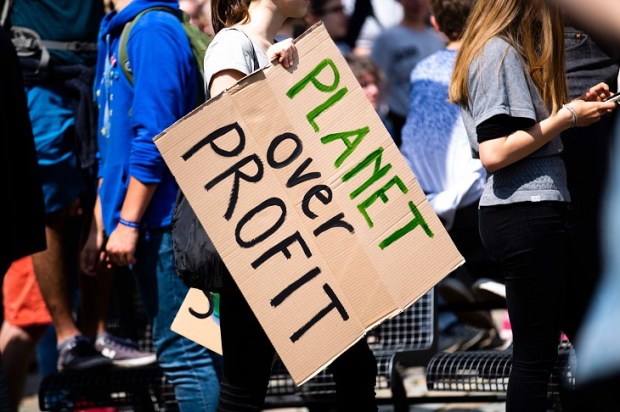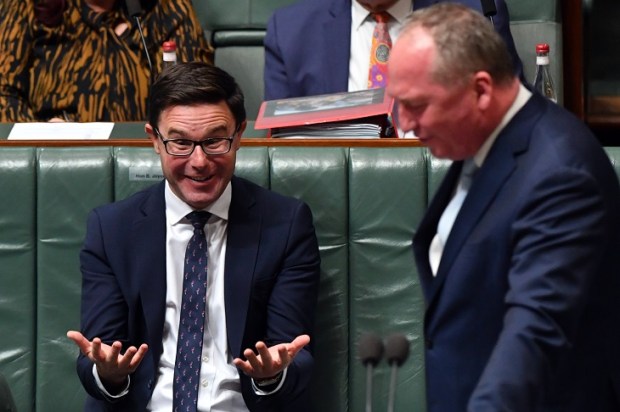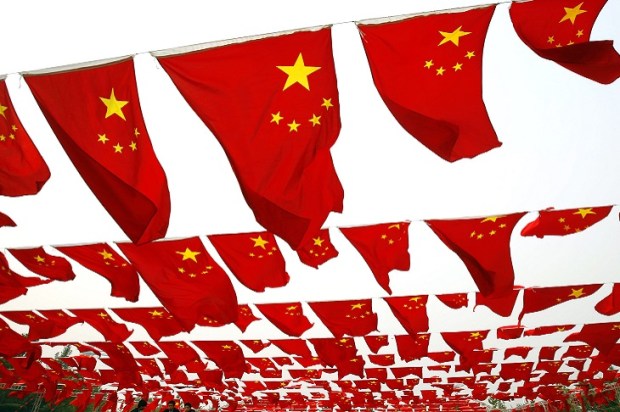There is this perception that all that is bad about business comes from the ‘Big End of Town’. Books and movies have been released over the years with Edward G Robinson-type characters leading business enterprises that trampled over anyone getting in the way. To this day, the ‘Big End of Town’ has been scorned by those describing themselves as ‘progressive’.
The blurb for an Australian novel written by W. R. Widerberg, titled The Big End of Town reads:
‘…this takes us on a page turning roller-coaster into the treacherous world of big business, where the stakes are to die for. Calvert had been defrauding Monarch all that time … Calvert was the chairman. He was the chairman of a bank. He sat on the boards of the country’s blue chip companies. He was a lawyer for Christ’s sake. He influenced the appointment of judges.’
Author Widerberg writes from experience, having previously carved out a career in the corporate world. Now in retirement from the Big End of Town, he says, ‘Climate change has since inspired me to write about the calamities that face us through inaction.’
Maybe in a few years Mr Widerberg can write of calamities of a different kind.
He may be interested to know that there is a new bully on the block in the Big End of Town and this bully is telling the corporate moguls how to run their business.
Back in the day, it was people like Frank Lowy, Peter Abeles, Rupert Murdoch, Lang Hancock, Frank Packer, and Reg Ansett who were identified as ‘The Big End of Town’. They were in the same mould as people overseas like Andrew Carnegie and Henry Ford. All are self-made men who used their initiatives and ability to create enormous wealth for themselves and their stakeholders and to stimulate the growth that built Australia. Their ideas and the power that came with their success opened doors, influenced governments, and inspired other business enterprises to follow their lead. The primary factor is that these ‘self-made’ moguls were always prepared to take and manage risk, inevitably with their interests most at risk.
The new bully in the ‘Big End’ is quite different.
Well, they are not all men for a start, but the overriding difference is that the new bully is certainly not ‘self-made’. They are more likely to have assumed power on the back of an appointment achieved, not on the basis of what they know, but on who they know. The bully in the ‘Big End’ today can rarely, if ever, point to any demonstrable personal business achievement and has rarely, if ever, created their business enterprise. Most certainly, the bully in the ‘Big End’ today is only taking and managing risk with other people’s money. Relative to the personal risk they expose themselves to, they are handsomely remunerated for ‘managing’ other people’s money.
Another point of difference is that the new bullies in the Big End of Town are not there for the long term, They are in for the tenure of their appointment and will accept a significant financial handshake to step down. Essentially, they use nothing other than other people’s money as the weapon of choice to influence and direct investment right across the economy.
Here are two industry groups, that illustrate the point.
The first is the banking sector.
Each of the major banking groups in Australia belong to the Net Zero Banking Alliance (NZBA) which in their words:
‘…is an industry-led, UN-convened group of more than 100 banks across the world which is committed to transition all operational and attributable GHG emissions from their lending and investment portfolios to align with pathways to net-zero by mid-century or sooner, including CO2 emissions reaching net-zero at the latest by 2050, consistent with a maximum temperature rise of 1.5°C above pre-industrial levels by 2100.’
All banks who have joined NZBA are the same but here, for example, is what NAB say about their approach. NAB will ‘align our portfolio to reflect and finance the low-carbon, climate-resilient economy required to limit global warming to well-below 2, striving for 1.5 degrees Celsius. To meet this requirement, we have set a goal to align our lending portfolio to net zero emissions by 2050’.
NAB boasts that this policy has ‘Broad Portfolio Coverage with targets set that will account for a substantial majority of our Australian lending portfolio, and will include residential mortgages, commercial real estate (office and retail), agriculture, power generation (covers power generation & related retail, electricity transmission and distribution), resources (including coal, oil, and gas), transport (covers road freight, air, rail and international sea transport), heavy manufacturing (covers cement, lime, plaster, concrete, bricks, iron, steel and aluminium) and lending for small and medium-sized enterprises (SMEs) in the commercial and services sectors’.
NAB goes on to say these policies are ‘Science-based: Decarbonisation targets will be set for 2030 and 2050 using scenarios that are science-based and aligned to limit global warming to 1.5 degrees Celsius’.
Given all major banks have signed up to these ideals, one can imagine the impact these policies will have on all sectors of the Australian economy.
The second sector acting as a bully is the super funds – superannuation rather than ‘super duper’ I hasten to add.
These super funds are the outcome of government policy, not individual initiative, and have accumulated control of more than $3 trillion in funds earned by and the property of hard-working Australians. Having control of these funds has enabled the activist element to start dictating both to government and the corporate world what they want.
To quote HESTA, one of more vocal super funds that recently wrote to government and 300 ASX listed companies:
‘As a large, diversified asset owner, long-term climate-related risk exists for HESTA members, regardless of portfolio assets, as the risk is systemic. We consider members’ best financial interests are served through a timely, equitable and orderly transition to net zero emissions by 2050 in order to minimise the systemic risks of climate change. This requires a Paris-aligned transition of our economy, which seeks to hold the increase in global average temperature to well below 2°C above pre-industrial levels and pursue efforts to limit the temperature increase to 1.5°C
‘HESTA has written to the Chairs of AGL, Origin, Santos and Woodside informing them the companies were placed on the watchlist and outlining the Fund’s heightened concern about the disparity between the companies’ strategic targets and a 1.5˚C transition pathway.
‘Watchlist companies are subject to closer engagement and monitoring. The engagement escalation framework also considers the use of votes against “Say on Climate” resolutions, Directors’ elections, support or filing of shareholder resolutions and/or consideration of divestment, where HESTA considers there is inadequate evidence of progress to address risks and it is in members’ best financial interests.’
In effect, HESTA is telling these companies how to manage their business under threat of withdrawing investment if these demands are not met.
But here is the thing. Anyone who is up with the play in the science world including the IPCC, accepted some time ago that the 1.5°C limit is unachievable and it is just not going to happen. What the Australian banks and the Australian super funds are pursuing is analogous to them pouring their funds (other people’s money) into a fleet of ships setting out from Palos de la Frontera in expectation that sailing west, they will next see land in the East Indies. Meanwhile, there are other seafarers on the wharf who are going nowhere for they have no backing, but who know the fleet is doomed to fail. They have the evidence from the earlier return of Columbus!
It is important to understand that the 1.5°C target was always doubtful as far back as the 2015 Paris Agreement. It was only adopted as a means of placating concerns raised by small island nations who were seeking the strongest possible climate action. Their votes on the Paris Accord were gained through the acceptance of the 1.5°C limit. In the ways of the UN, adopting the impossible is a small price to pay to get votes over the line.
In 2018 – four years ago now – an IPCC report signalled that whilst it was technically possible, to achieve a limit of 1.5°C would require a worldwide energy transition that could scarcely be imagined, that would require the miraculous. And of course, since 2018 global emissions have been rising not falling. Thank you, China. Thank you, India. Neither of these heavy emitters contributing half of all global emissions are under any responsibility to reduce emissions before 2030.
Many leading climate scientists including those who have been lead authors for the IPCC conceded a long time ago that the 1.5°C limit was dead in the water.
So, what are our major banks and our major super funds doing claiming they are in tune with science? Such a claim is a lie.
We know this. None of today’s leaders, directors, and managers within the banks and the super funds will be around in ten or fifteen years to be held accountable for having led so many businesses astray. None will be around to be accountable for having pushed the Australian economy onto the rocks. They will all be in retirement spending their ‘golden handshake’.
And what of the analysts and fund managers who have followed the lead in recommending investment into ventures that are doomed to fail from totally unrealistic targets and ideological fantasies that are not in any way scientific?
The Big End of Town was better for Australia when there were no bullies and the players knew the facts.

























